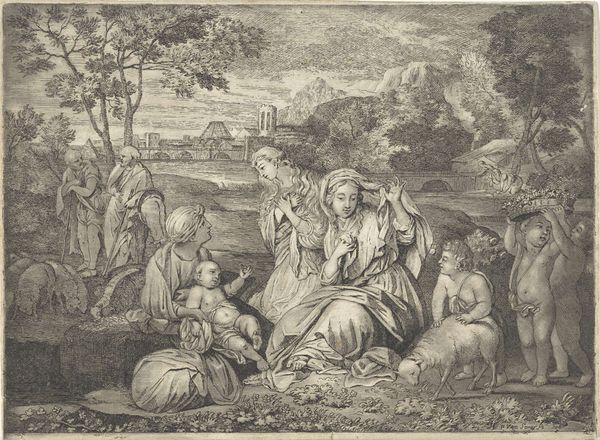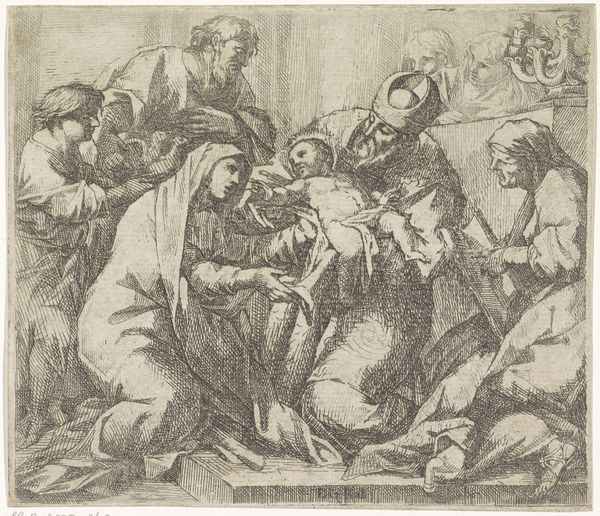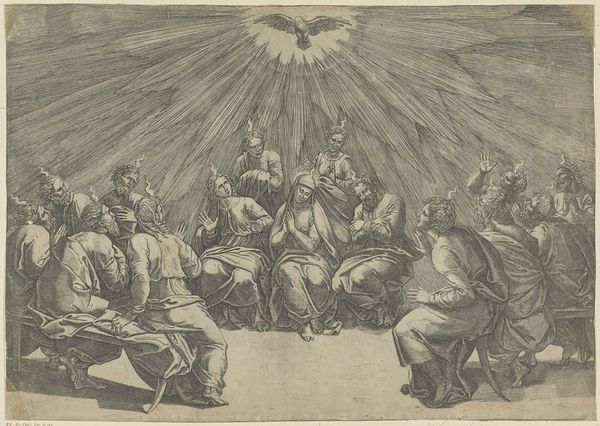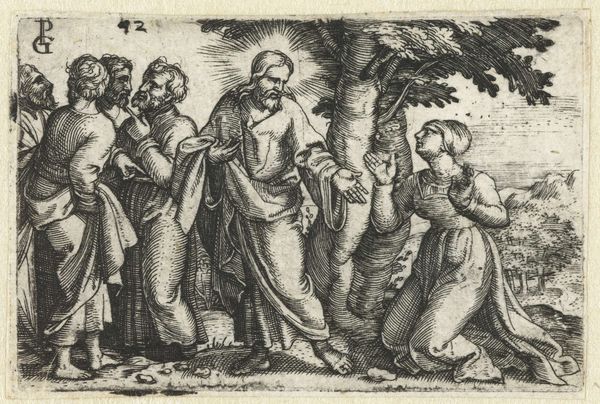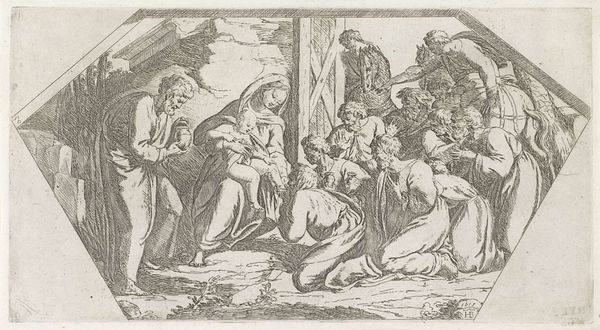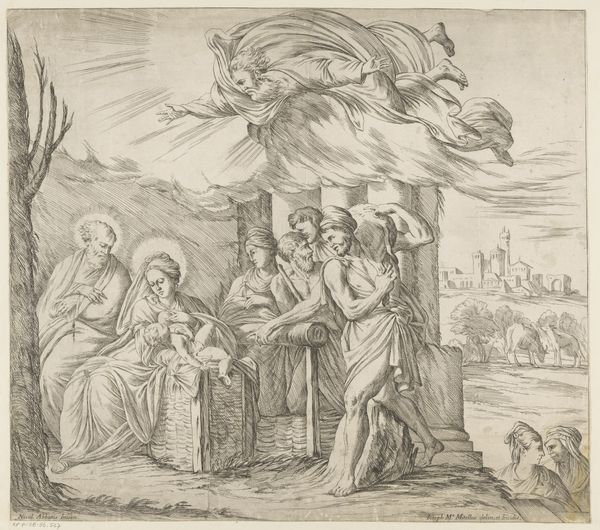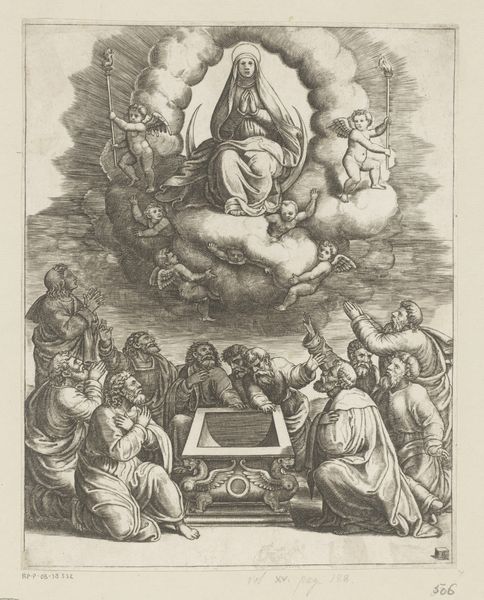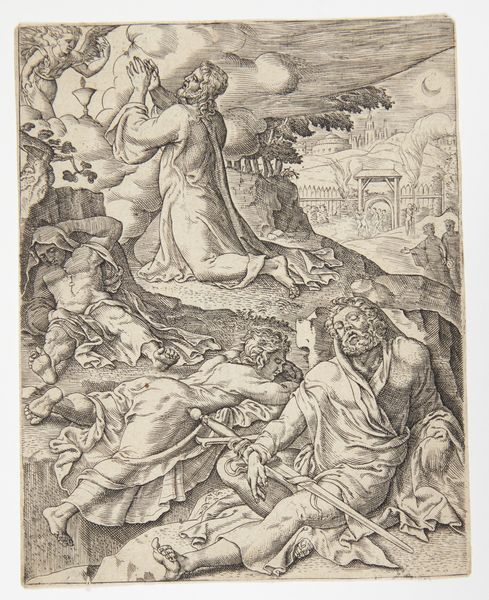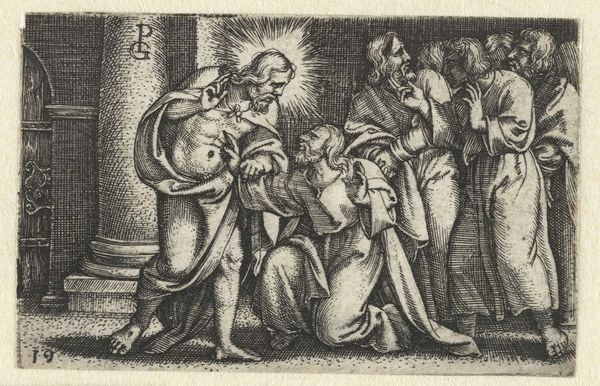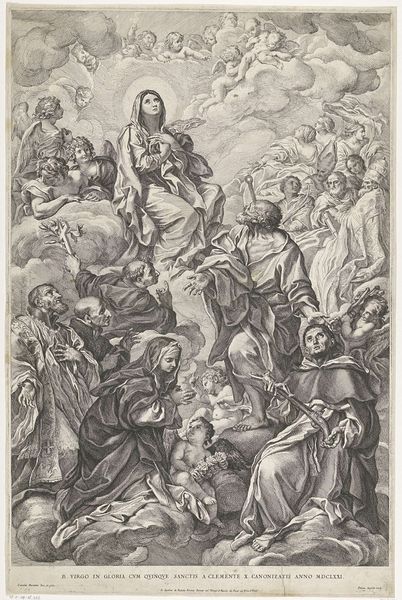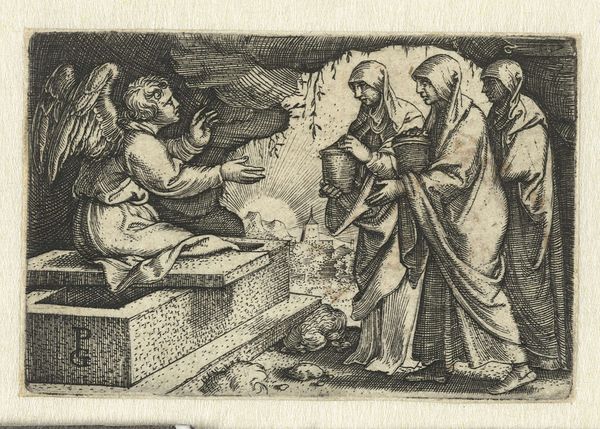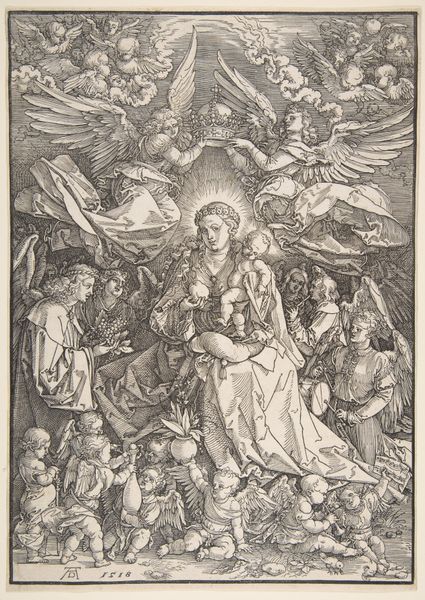
print, engraving
# print
#
figuration
#
line
#
history-painting
#
northern-renaissance
#
engraving
Dimensions: height 41 mm, width 61 mm
Copyright: Rijks Museum: Open Domain
Curator: Ah, here we have "The Descent of the Holy Spirit," an engraving by Georg Pencz, dating back to 1534 or 1535. You can find this gem over at the Rijksmuseum. Editor: Immediately, it gives me this powerful sense of contained chaos—a moment right before something big happens, or has just happened. Everyone's looking upward, flames hovering above their heads. Curator: Precisely. Pencz was a German printmaker, deeply involved in the Protestant Reformation. This scene, from the Book of Acts, signifies a pivotal moment for early Christians: the Holy Spirit descends upon the Apostles, granting them the ability to speak in different languages, enabling them to spread the gospel. Editor: So, that explains the tongues of fire! I was wondering about those little flickering lights. You know, it’s almost like a pre-modern comic book panel. Everyone is so expressive, but also, kind of…stiff? It has a beautifully awkward feel. Curator: The composition and the linework are very characteristic of the Northern Renaissance style. Pencz employs a tight, intricate network of lines to create texture and shading, giving the figures a sculptural quality. Note the presence of Mary in the center— a figure often highlighted as a powerful matriarchal symbol within the evolving landscape of religious reform. Her central placement signifies her continuing influence. Editor: Yes, she definitely grounds the scene! And that dove, right at the top, is a stroke of genius. Is the stiffness intentional, do you think, maybe reflecting a society still very bound by ritual and tradition, even amid the Reformation? Curator: That's a compelling interpretation. It underlines the tensions inherent in the Reformation: a desire for change weighed against deeply ingrained customs. Also, look at how the gaze of almost every person directs you towards the Dove, as if highlighting a new guiding light amid times of change. Editor: You know, looking at this I feel that same excitement those folks must have felt way back when. It just oozes raw anticipation. So well, here we are, still looking at this artwork and interpreting what all the figures were seeking! Curator: Absolutely. Pencz's engraving encapsulates not only a pivotal religious moment but also speaks volumes about the social and political anxieties of his time. It is the continuing conversation between past and present, art and our daily lives, that truly intrigues.
Comments
No comments
Be the first to comment and join the conversation on the ultimate creative platform.
